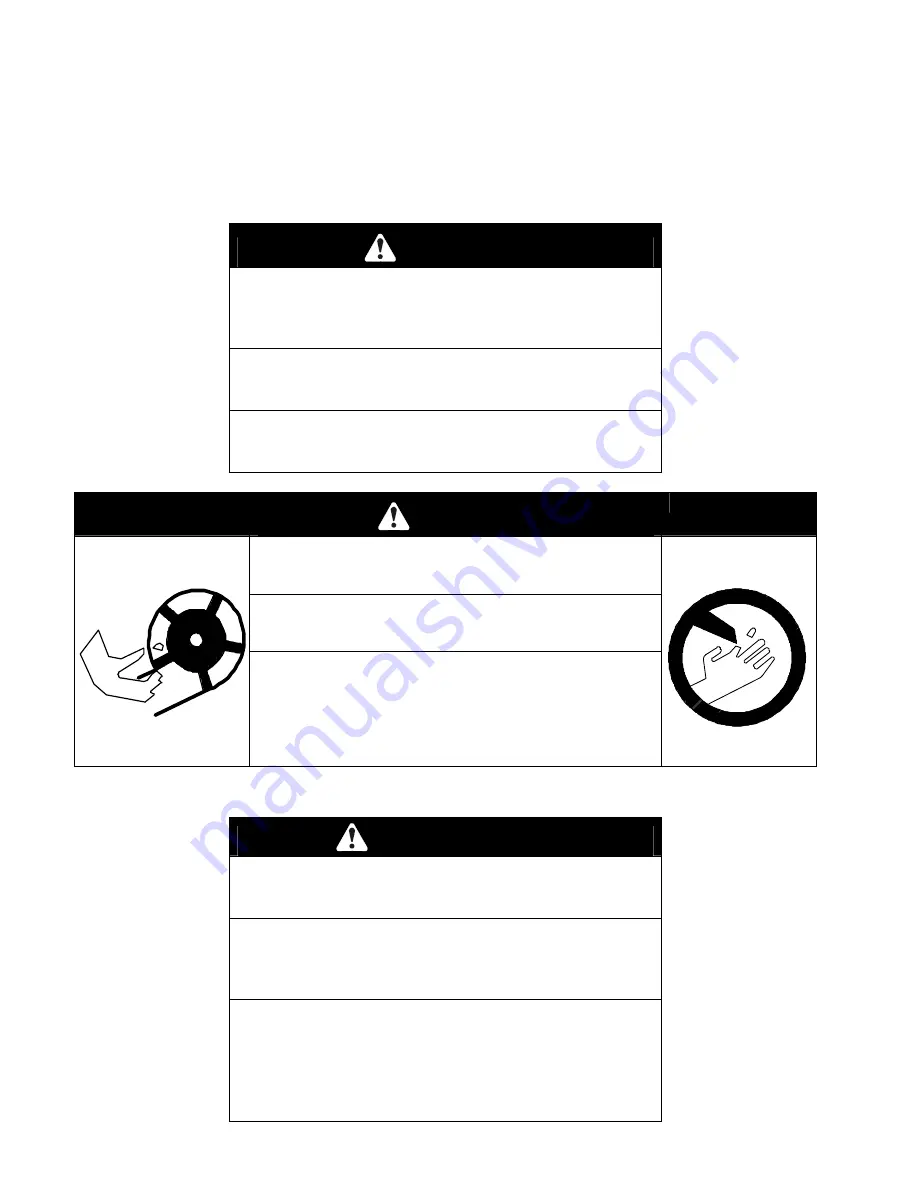
2
1.4 OPERATION
Although hazard control and accident prevention are partially dependent upon the
design and configuration of the equipment, these factors are also dependent upon
the awareness, concern, prudence, and proper training of the personnel involved in
the operation, transport, maintenance, and storage of the equipment. It is essential
that all Operator Safety Mechanisms be connected and in operating condition prior
to use for mowing. Refer to the Operator’s Manual for the mower for additional
hazard control and accident prevention information.
WARNING
POTENTIAL HAZARD
♦
An uncovered discharge opening will allow objects to
be thrown in operator’s or bystander’s direction.
Also, contact with blade could occur.
WHAT CAN HAPPEN
♦
Thrown objects or blade contact can cause serious
injury or kill you or bystanders.
HOW TO AVOID THE HAZARD
♦
Never operate mower unless discharge chute or
entire grass collection system is installed.
DANGER
POTENTIAL HAZARD
♦
There are rotating blades in the blower and under the
mower deck.
WHAT CAN HAPPEN
♦
Blade contact can cause serious operator or bystander
injury or even death.
HOW TO AVOID THE HAZARD
♦
Do NOT reach into Blower unless Rotation Indicator
has Stopped. Disengage PTO, stop engine, remove
key, WAIT FOR MOVING PARTS TO STOP
♦
Do NOT operate mower without deflector chute or
entire bag system in place.
1.4.1 Use
EXTREME
caution when mowing and/or turning on slopes as loss of traction
and/or tip-over could occur. The operator is responsible for safe operation on slopes.
DANGER
POTENTIAL HAZARD
♦
Mowing on wet grass or steep slopes can cause
sliding and loss of control.
WHAT CAN HAPPEN
♦
Wheels dropping over edges, ditches, steep banks,
or water can cause rollovers, which may result in
serious injury, death or drowning.
HOW TO AVOID THE HAZARD
♦
Do not mow slopes when grass is wet.
♦
Do not mow near drop-offs or near water.
♦
Do not mow slopes greater than 15 degrees.
♦
Reduce speed and use extreme caution on slopes.
♦
Avoid sudden turns or rapid speed changes.








































